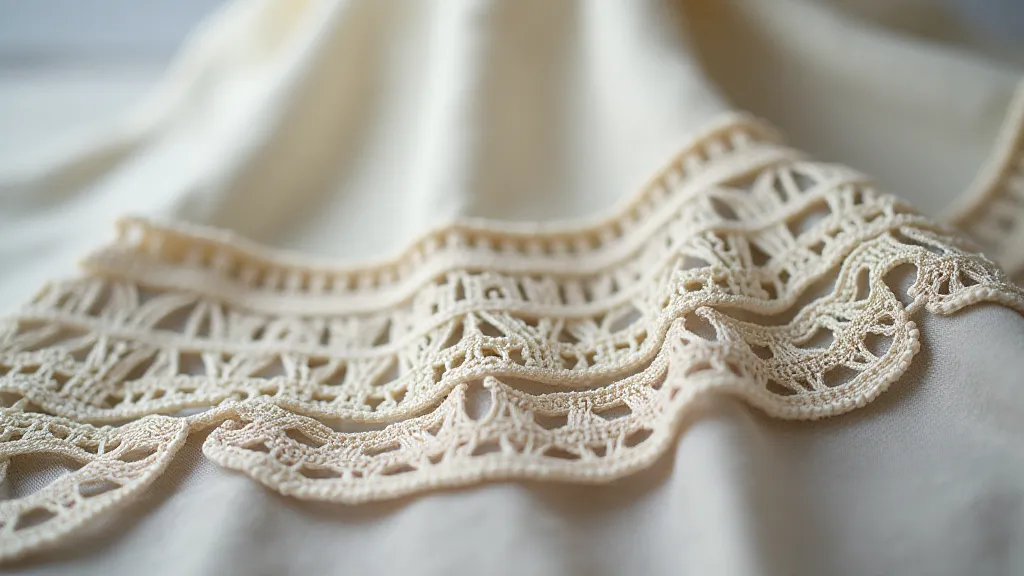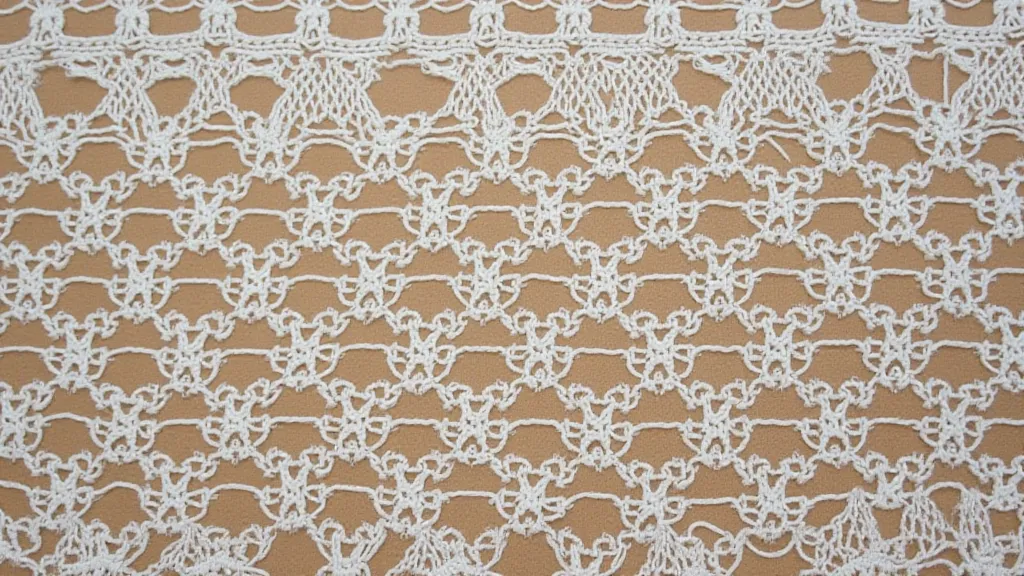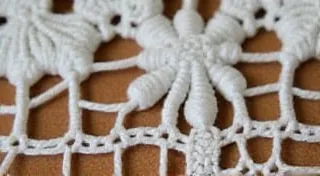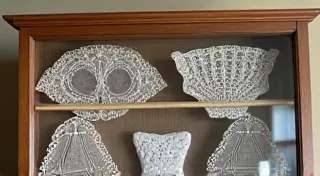Common Bobbin Lace Defects and How to Recognize Them
Identifying antique bobbin lace can be a rewarding hobby, but it’s not always straightforward. While a pristine, perfect piece of lace commands a higher value, understanding common defects and imperfections is vital for accurate identification, assessing value, and appreciating the history woven into each piece. These flaws aren’t necessarily detrimental; they often tell a story about the maker, the era, or the lace’s journey through time. Before you delve into the intricacies of identifying these defects, a basic grasp of bobbin lace terminology can be immensely helpful. Understanding terms like “pricking,” “cloth,” and “torchon ground” will provide a solid foundation for appreciating and analyzing the lace.
Understanding Lace Defects: More Than Just Imperfections
Before diving into specific defects, it's important to understand that imperfections in antique bobbin lace are almost universal. Lace-making was often a cottage industry, performed by individuals with varying levels of skill. Tools were simpler, and standardization was nonexistent. Furthermore, age and handling contribute to wear and tear. Recognizing these imperfections allows you to move beyond a purely aesthetic assessment and delve deeper into the lace’s history and authenticity. The process of creating bobbin lace is remarkably complex; each thread is meticulously twisted and manipulated, making the occurrence of some minor flaws almost inevitable.
Common Defects & What They Indicate
Here's a breakdown of some common defects found in antique bobbin lace and what they can signify:
1. Broken or Missing Threads (Thread Breaks)
This is perhaps the most frequent defect. Broken threads are visible gaps in the lace pattern. They can occur due to fragile thread breaking during the making process, or damage occurring later during handling or storage. The nature of these breaks, their frequency, and their repair (or lack thereof) can offer valuable clues about the lace's history. For example, frequent thread breaks often point towards a less experienced lace maker or the use of a weaker thread.

What it indicates: Common in older lace (pre-1900). Can indicate a rushed production or less-than-ideal thread quality. Multiple breaks may suggest a beginner or less-skilled maker. The impact of these thread breaks can sometimes be mitigated, but even careful repairs can leave subtle traces that can be telling.
2. Puckering and Uneven Tension
Uneven tension in the thread causes puckering or warping. This can be visible across the entire piece or in specific areas. It’s often caused by inconsistencies in the maker’s hand or tool adjustments. Mastering consistent tension is a hallmark of a skilled lace maker, so significant puckering often suggests a less experienced artisan.

What it indicates: Can suggest a less experienced maker who hadn't mastered tension control. Sometimes, uneven tension is more pronounced in areas that have experienced stretching or distortion. Understanding how historical lace patterns were formed can give you insight into the challenges of maintaining even tension across complex designs. If you're fascinated by the evolution of these designs, you might find exploring early bobbin lace patterns particularly enriching.
3. Knotting and Repair Work
Lace makers often repaired broken threads by knotting them back into the design. These knots can be obvious or subtly incorporated. More extensive repair work (patches or re-weaving) can also be present. The techniques used in these repairs can provide significant clues about the lace’s origin and age. A crude repair likely signifies a later, less-skilled intervention, while a more sophisticated repair might reflect a desire to preserve a valued piece.
What it indicates: Repairs often indicate the lace was valued and saved, rather than discarded. The quality of the repair can provide clues about the period and the maker's skill; a very crude repair suggests a later, less-skilled intervention. Sometimes, even the thread used in a repair can be different from the original, offering another layer of information about the lace’s history.
4. Variations in Thread Thickness & Color
Antique lace rarely has perfectly uniform thread. Slight variations in thickness and color are common, especially when the thread was spun by hand or derived from natural materials. Changes in color can occur due to fading or exposure to different storage conditions. The dyes used in historical lace production often came from natural sources, which explains the subtle variations in color that are so characteristic of antique pieces.

What it indicates: Indicates natural, handspun or hand-dyed materials which is common in older lace. Significant color changes might signify differing dye batches or environmental exposure. The impact of time and environment on these natural dyes is a compelling reminder of the lace’s journey through history.
5. Pattern Irregularities and Misaligned Points
Perfect symmetry is difficult to achieve, especially with hand-made lace. Slight misalignments, asymmetrical points, or minor deviations from the intended pattern are frequent. These imperfections are a testament to the human element in the creation process, and they serve as a fascinating contrast to the precision often associated with machine-made lace.
What it indicates: A reminder of the human element in creation. More significant deviations from the pattern can sometimes indicate a less skilled maker or a rushed production. The context surrounding the lace’s creation, including the prevailing artistic styles and the maker's personal preferences, can help interpret these deviations.
Beyond Defects: Context and Historical Significance
While identifying defects is a valuable skill, it's only part of the story. Understanding the broader historical context in which the lace was made is equally important. Different eras and regions developed distinct styles and techniques, and these influences are often reflected in the lace’s construction and appearance. Considering the socio-economic conditions that shaped the lace-making industry can provide a deeper appreciation for the labor and skill involved.
Preserving and Restoring Antique Bobbin Lace
Antique bobbin lace is fragile and requires careful handling and storage. If you’re interested in preserving and restoring these treasures, it's crucial to follow proper techniques to avoid further damage. Attempting restoration yourself can be tricky, and it’s often best left to trained professionals. However, learning about the principles of conservation can help you appreciate the challenges involved and make informed decisions about the care of your collection. The intricate nature of bobbin lace means that even seemingly minor actions can have a significant impact on its long-term survival. For guidance on restoring antique bobbin lace, consult with experienced professionals.
Conclusion
Don’t be discouraged by the presence of defects. They are integral parts of antique bobbin lace's character and history. By learning to identify and interpret these flaws, you’ll deepen your understanding of this beautiful art form and become a more discerning collector. The intricate details and subtle imperfections tell a story that extends far beyond the immediate aesthetic appeal. It is a window into the lives of the makers, the evolving techniques of the craft, and the broader currents of history. Embrace these imperfections; they are what make antique bobbin lace so uniquely captivating.



![The History of Bobbin Lace Making in [Specific Country/Region]](/thumbs/history-bobbin-lace-[country].webp)
![The Influence of [Specific Cultural Element] on Bobbin Lace Design](/thumbs/bobbin-lace-cultural-influence.webp)
